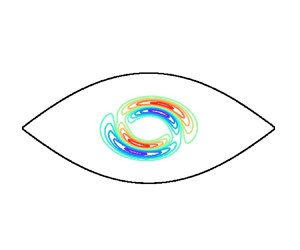Published online by Cambridge University Press: 16 May 2024

The linear stability of the Stuart vortices, which is a model of arrays of vortices often observed in the atmosphere and the oceans, in rotating stratified fluids is investigated by local and modal stability analysis. As in the case of the two-dimensional (2-D) Taylor–Green vortices, five types of instability appear in general: the pure-hyperbolic instability, the strato-hyperbolic instability, the rotational-hyperbolic instability, the centrifugal instability and the elliptic instability. The condition for each instability and the estimate of the growth rate derived by Hattori & Hirota (J. Fluid Mech., vol. 967, 2023, A32) are shown to also be useful for the Stuart vortices, which supports their applicability to general flows. The properties of each instability depend on stratification and rotation in a way similar to the case of the 2-D Taylor–Green vortices. For the Stuart vortices, however, the centrifugal instability and the elliptic instability become more dominant than the three hyperbolic instabilities in comparison to the 2-D Taylor–Green vortices; this is explained by the larger ratios of the maximum vorticity and the strain rate at the elliptic stagnation points to the strain rate at the hyperbolic stagnation points. Direct correspondence between the modal and local stability results is further established by comparing unstable modes to solutions to the local stability equations; this is useful for identifying the types of modes since the mechanism of instability is readily known in the local stability analysis. This helps us to discover the modes of the ring-type elliptic instability, which have been predicted only theoretically.